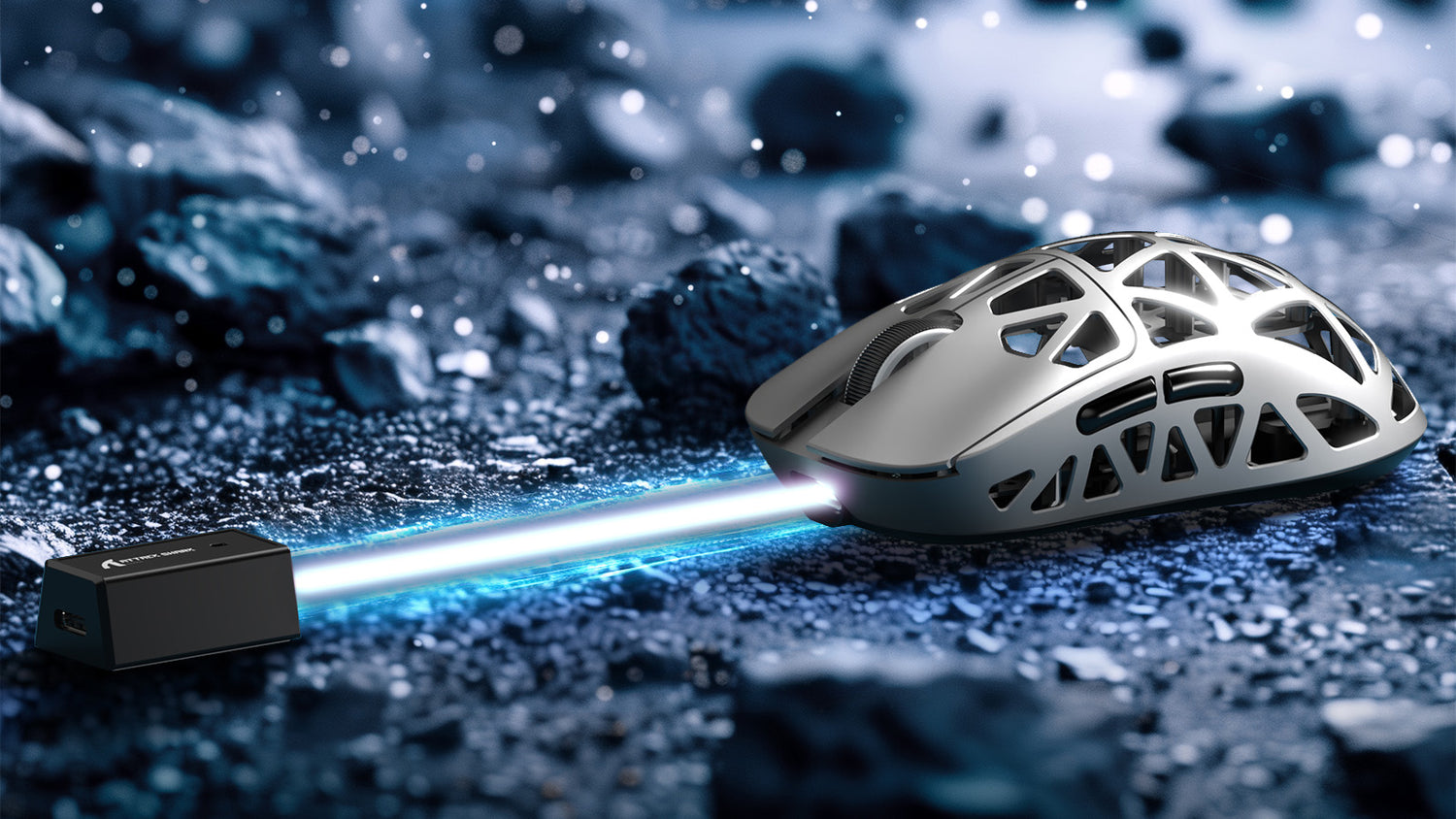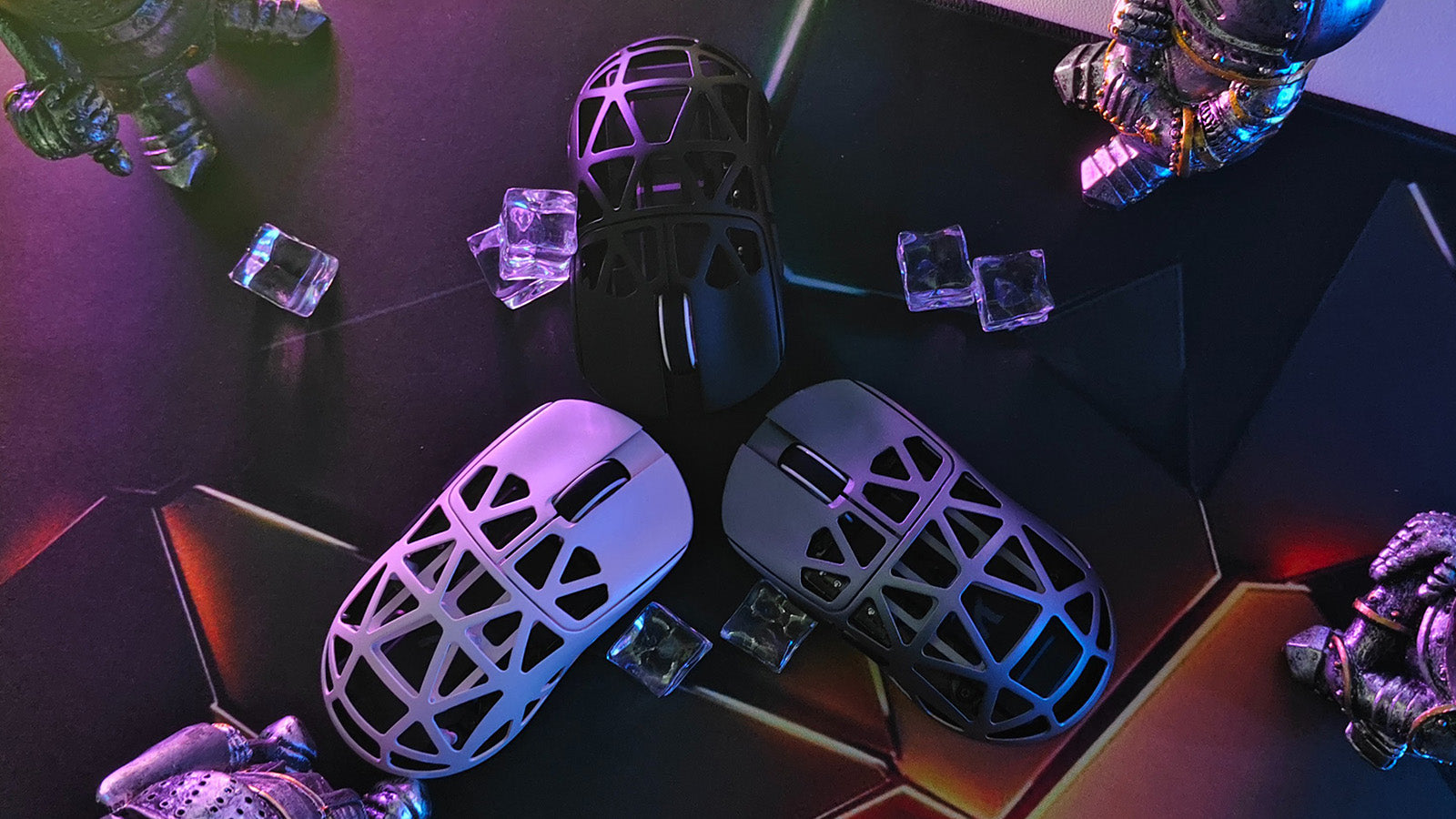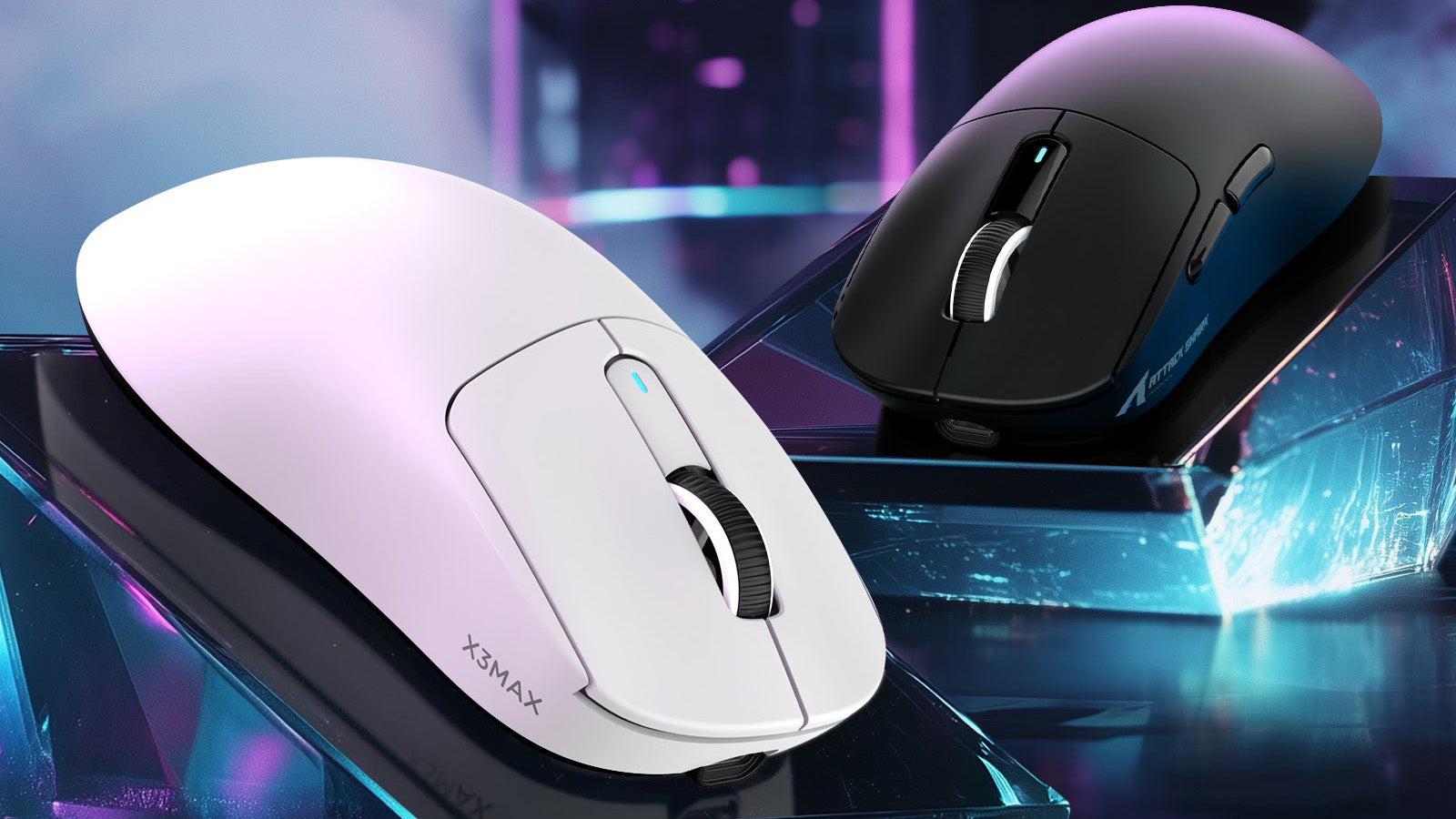When it comes to gaming, choosing the right mouse sensitivity (DPI) can be important. DPI stands for "dots per inch," and it's all about how fast your mouse pointer moves across your screen. Get it right, and you'll be nailing those precise shots in shooters or swiftly navigating strategy game maps like a pro. But with so many settings and options, where do you even start? Don't worry; we've got you covered. This guide will tell everything you need to know about DPI in a way that's easy to grasp, helping you find the perfect setting to match your gaming habits and make sure your moves are on point.

DPI: Make Your Mouse Movement Master
Have you ever wondered why your mouse cursor flies across the screen with a slight touch in some setups, while in others, it crawls even with a strong nudge? That's DPI at work.
What's DPI All About?
DPI stands for "dots per inch," and in simple terms, it's about how sensitive your mouse is. A higher DPI means your cursor will move farther when you move your mouse, while a lower DPI means it moves less. Imagine DPI like the gears of a bike: high DPI lets you cover more ground with less effort, and low DPI makes you work harder for finer control.
Matching DPI to Your Screen
Your screen size and resolution are like the playing field for your mouse. The bigger the screen or the higher the resolution, the more space your cursor has to cover. So, if you're using a large monitor or one with a super-sharp display (think 4K), you might need a higher DPI to move smoothly from one edge to another without needing a larger desk!
Finding Your Mouse’s DPI Settings
Most gaming mice come with a way to adjust DPI. There might be a button that cycles through different DPI settings, or you might need to use software that comes with your mouse. This is where you take control. By tweaking these settings, you can find the perfect balance for your gaming needs and make sure your mouse feels just right in action. Moreover, it's worth noting the advancements in mouse sensor technology that cater to an increasing demand for precision and speed. For instance, sensors like the PixArt PAW3395 are capable of reaching up to 26,000 DPI, while the latest PAW3950 sensor boasts an incredible 42,000 DPI capability. These cutting-edge sensors represent the latest trend in gaming mice, offering gamers an unprecedented level of sensitivity to match their highly skilled gameplay.Along with DPI, the type of mouse you use can significantly impact your gaming experience.Choosing the right mouse can greatly impact your comfort and performance, so consider reading:How to Choose a Mouse That Suits You for more guidance.

How to Tailor DPI to Your Favorite Games
Different games demand different styles of play, and your DPI setting is a big part of that. Whether you're lining up a sniper shot or commanding an army, the right DPI can make all the difference.
DPI for First-Person Shooters (FPS)
When every shot counts, precision is key. In FPS games, many players prefer a lower DPI setting, which allows for finer control and more accurate aiming. If you're the type who likes to take careful aim, try starting with a lower DPI around 400-800 and adjust from there based on comfort.
Strategy and MOBA Games
In real-time strategy (RTS) and multiplayer online battle arena (MOBA) games, you often need to move across the map quickly or select units without a hitch. A moderate DPI range, say 800-1200, often provides a good balance between speed and control. It helps you react fast without overshooting your targets.
Massive Multiplayer Online (MMO) Gaming
With MMOs, you have a lot of ground to cover and a myriad of menus to navigate. A slightly higher DPI can be advantageous, allowing you to turn swiftly and manage menus efficiently. Something in the range of 1000-1600 DPI might be your sweet spot here.
Finding Your Starting Point
The best way to find your ideal DPI is to start with these ranges and tweak them during your normal play. Pay attention to how it feels—are you overshooting your targets, or do you feel slow and cumbersome? Adjust in small increments until it feels just right.
Practical Tip: Many gaming mice come with software that lets you set up different profiles for your favorite games. Take advantage of this feature so you can easily switch between your preferred DPI settings for each game type. Additionally, the functionality of DPI adjustment has been further enhanced by the use of specialized software programming. Such software not only allows you to fine-tune your DPI settings across a wide range but also enables you to create intricate profiles for different games or scenarios. This flexibility ensures that whether you're embarking on a stealthy sniper mission or commanding vast armies across digital battlefields, your mouse is precisely calibrated for the task at hand.

Find Your Personal DPI Fit
The right DPI setting should feel comfortable and natural for your style of play. But with so many variables, how do you pinpoint that perfect number?
- Consider Your Play Area: Size matters — at least when it comes to your mouse pad and desk space. If you have a large area where you can move your mouse freely, a lower DPI might work best since you have more room to maneuver. For smaller spaces, a higher DPI could be better as it requires less physical movement.
- Screen Size and Resolution: The larger your screen or the higher the resolution, the more distance your cursor needs to travel. This might mean you need a higher DPI. Conversely, if you're gaming on a laptop or a smaller monitor, a lower DPI might suffice because there’s less screen real estate to traverse.
- Your Physical Touch: Are you heavy-handed, or do you have a lighter touch? Do you find yourself dragging the mouse, or are you more of a wrist mover? These physical traits influence your ideal DPI. A heavy-handed gamer might prefer a higher DPI to avoid jerky movements, whereas someone with a lighter touch might benefit from a lower DPI for increased accuracy.
- Trial and Error: Begin with the DPI recommendations for your game genre, then adjust in small increments. Take note of how each change affects your control and comfort level. It may take several sessions to get it just right, but the payoff is worth it — a DPI that feels like an extension of your own reflexes.
- Practical Exercise: Set up a test scenario in your game of choice. Perform a series of movements or actions you'd do commonly in-game, like flick shots in an FPS or unit selections in an RTS. If you miss your mark, adjust your DPI. Rinse and repeat until it feels just right.

The Low DPI vs. High DPI
Gamers often argue about whether it's better to have a slow-moving cursor (low DPI) or a fast-moving one (high DPI). It depends on what feels right for you and your game.
Slow DPI (Below 800)
A slow DPI setting, anything below 800, is ideal for gamers who need ultra-precision in their gameplay, such as carefully lining up shots in shooting games. The main advantage of a lower DPI is more accurate targeting, allowing for precise movements and improved aiming accuracy. However, one downside to consider is that it requires more substantial hand movements to move the cursor across the screen, which can lead to hand fatigue during longer gaming sessions.
Fast DPI (Above 1200)
A fast DPI setting, set above 1200, is particularly beneficial for rapidly surveying the field in strategy games where quick panning and scanning are crucial. This high DPI enables you to glide the cursor across your screen with minimal hand movement, making it highly efficient for navigating sprawling maps or multiple displays quickly. The trade-off, however, is that such sensitivity can lead to overshooting your intended target, and there might be an adjustment period before you get accustomed to the responsiveness.
The DPI Finale
In conclusion, finding the optimal DPI for your gaming needs is a personal journey that marries the technical demands of your favorite games with your unique playing style and physical comfort. Whether you favor the meticulous precision of lower DPI settings for those critical FPS shots or the swift, sweeping motions that higher DPI offers in expansive strategy game worlds, the key is to start with suggested norms and then fine-tune them patiently. The perfect balance lies at the intersection of screen size, desk space, and your natural hand movements, with a touch of trial-and-error refinement. Embrace the process, and you'll discover a DPI sweet spot that feels like second nature, enhancing your gaming performance and enjoyment alike.






Leave a comment
This site is protected by hCaptcha and the hCaptcha Privacy Policy and Terms of Service apply.